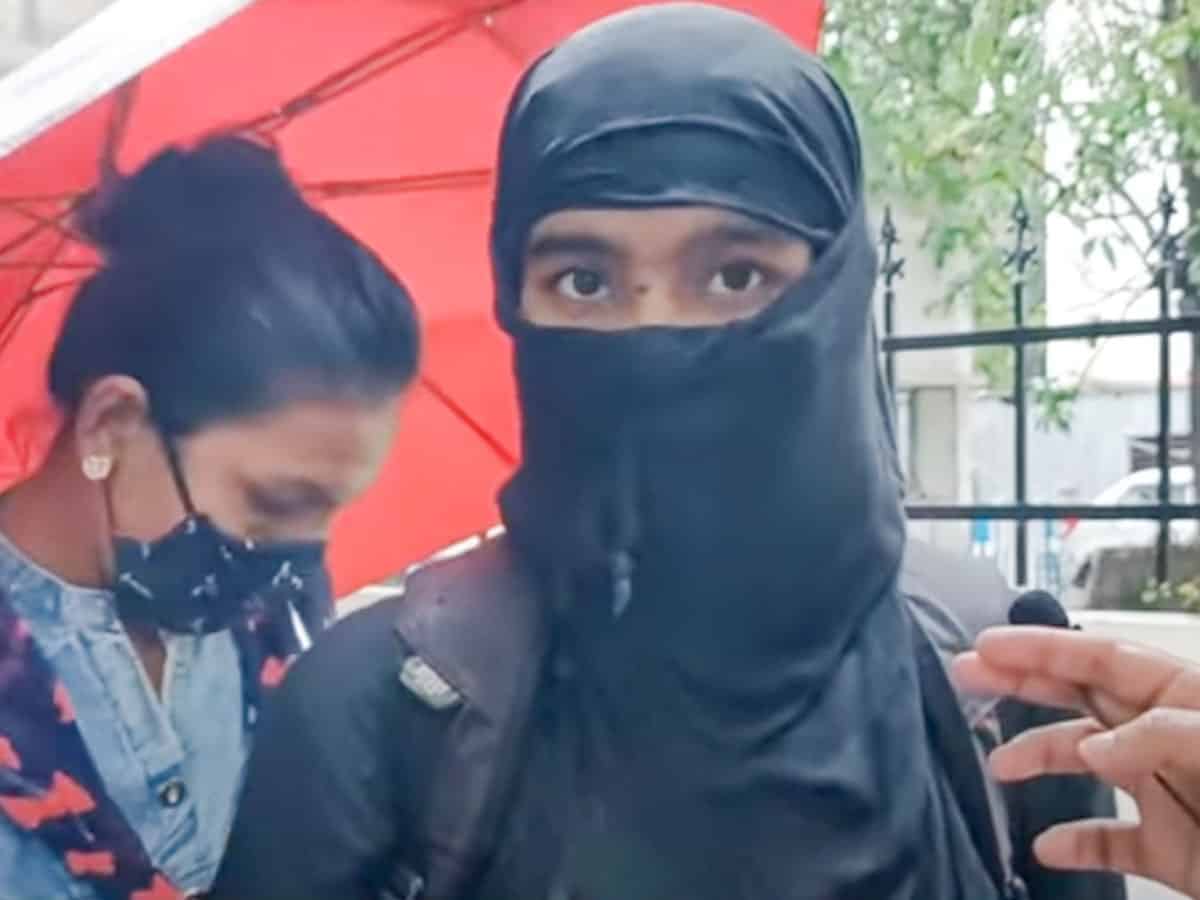Kolkata: Applications of over 1,000 Muslim girls were rejected by the West Bengal Police Recruitment Board (WBPRB) because they were seen wearing headscarves or hijabs in the photos that they had attached with their forms.
The rejection of the application of these candidates has created a controversy with many of the candidates contesting the government decision.
In fact, WBPRB has rejected more than 30,000 application forms submitted for recruitment of constables and lady constables. The board said that this was done owing to “mistakes” in the forms that include wearing hijab or headscarves in photos attached with the forms.
WBPRB guidelines say that the faces of the applicants should not be covered in any way in the photos. They read: “Applicants are advised not to upload images of other objects in place of photograph and signature. The photograph with face/head covering, sunglass/tinted glasses covering the eyes will not be accepted.
Photographs cropped from ‘groupies’ or ‘selfies’ shall also be disallowed during the scrutiny.”
The WBPRB is scheduled to conduct preliminary recruitment examination on 26 September. It has already issued admit cards for the test.
Clarion India, a Delhi based news portal, reported that their journalists spoke to some of the Muslim girls whose applications have been rejected. They say wearing a hijab was their constitutional right. One of them, Sonamoni Khatun, belonging to North 24 Parganas, said, “I have used my photo wearing hijab in the forms for several competitive exams. Nowhere was I rejected. The Police Recruitment Board is depriving me of my religious rights.”
Sumiya Yasmin from Murshidabad asked how the Board can reject my application when India’s constitution guarantees me the freedom to practice my religion. Another applicant, Tuhina Khatoon said she tried meeting the officer concerned in the WBPRB but was denied entry into the office.
The aggrieved candidates have written a letter to the WBPRB chairman and sought exception to the Board rule for them on the lines that have been extended to candidates from Sikh community.
They have also argued that wearing a hijab was part of their faith and cultural practices followed by their community in the state. “We believe that the scope of Indian democracy is wide enough to accommodate all religious faiths and beliefs,” they have said in the letter.
Clarion India spoke with Subrata Ganguly, a member of the recruitment Board, who said that the board has gone by the book. “WBPRB guidelines clearly say that photograph of a candidate should be visible clearly without covering the head. We have rejected 30,000 applications for various reasons. They include candidates of all religions. We have not checked their religion if they are Muslims or Sikhs or Hindus. We have also not discriminated against males or females,” he said.
Muslim Mirror reported that the West Bengal unit of Students Islamic Organisation of India (SIO) has written to the WBPRB chairperson in connection with the rejection of application forms.
The SIO demanded that the candidates should be given appropriate time to re-upload or edit their forms. It maintained that it is Muslim women’s right to wear hijab and this must not be treated as a reason for rejection of their forms.
The Cognate reported that representatives from the Welfare Party of India (WPI), All India Majlis-e-Ittehadul Muslimeen (AIMIM), Social Democratic Party of India (SDPI), Popular Front of India (PFI), Fraternity Movement (FM), Campus Front of India (CFI) and All Bengal Minority Youth Federation (ABMYF) have also written to the WBPRB.
In 2017, the Kerala High Court in the case of Fida Fathima vs Union of India ruled that appearing in an entrance examination while wearing a headscarf and dress in compliance with essential religious practices is a right protected by Article 25 of the Constitution of India.
Subsequently, the National Testing Agency, an apex body that conducts several exams including NEET, JEE, NET, and others, came out with guidelines allowing candidates to appear for exams wearing a headscarf, provided they reach two hours before reporting time to screen them properly.


